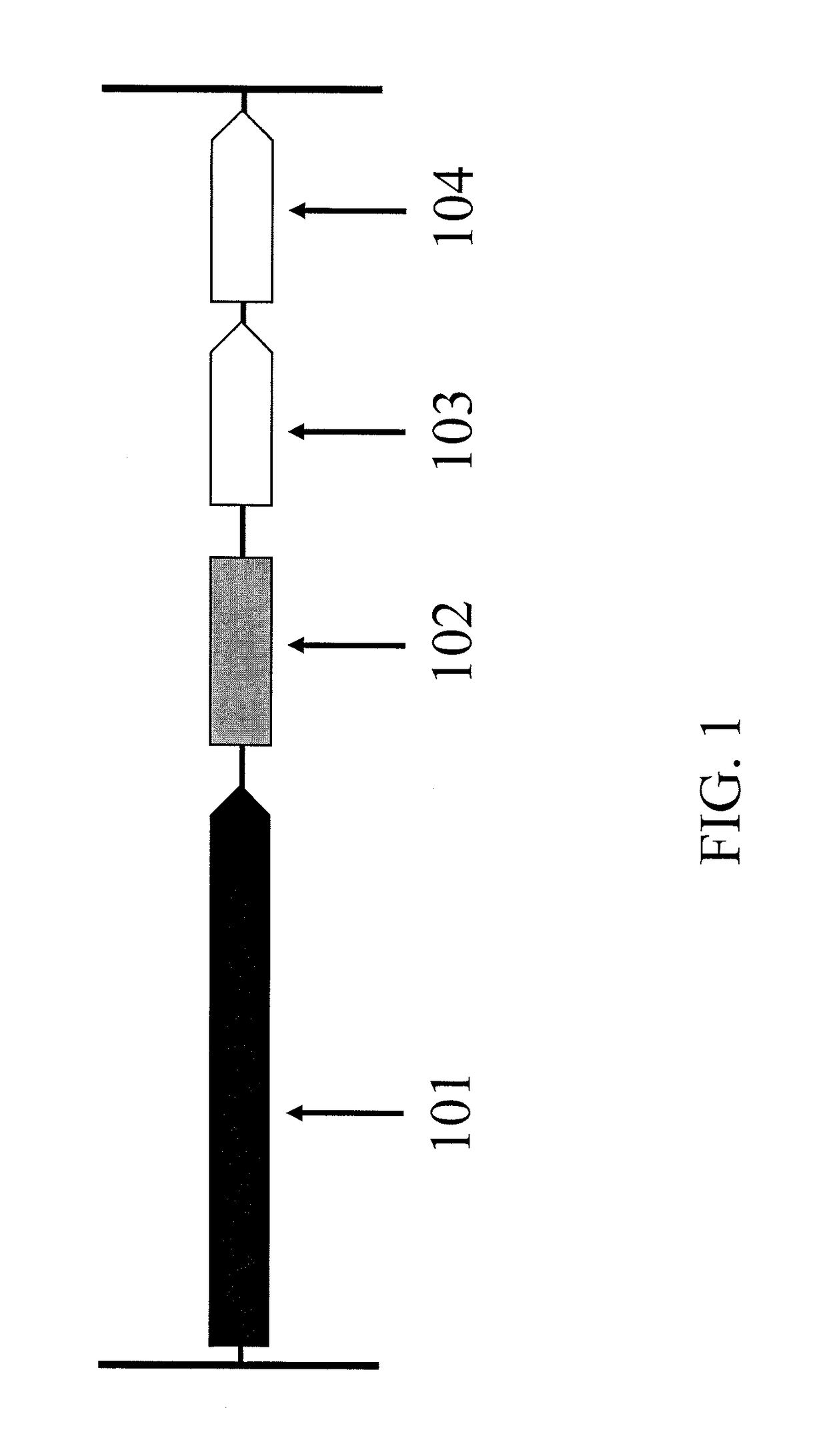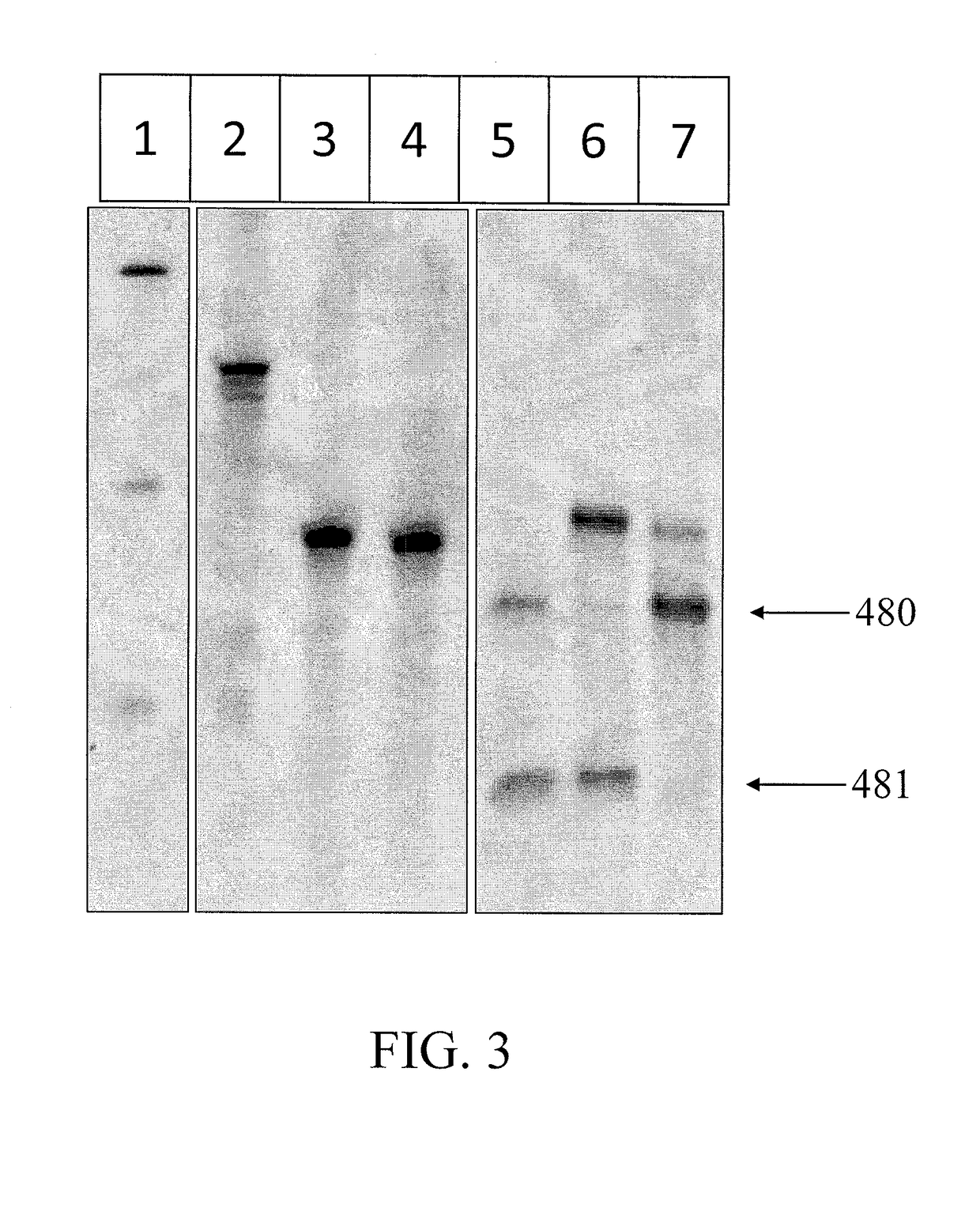Novel crispr-associated (CAS) protein
a technology of crispr and associated proteins, applied in the field of new crisprassociated (cas) proteins, can solve the problems of dna cleavage and cell death, and achieve the effect of facilitating the target knockdown of gene transcripts
- Summary
- Abstract
- Description
- Claims
- Application Information
AI Technical Summary
Benefits of technology
Problems solved by technology
Method used
Image
Examples
example 1
Discovery of a New CRISPR-Associated (Cas) Protein in Silico
[0167]This Example describes the in silico discovery of a new Cas protein, termed “CasM,” from genomic sequencing data. The overall approach used was similar to methods described in Shmakov et al., “Discovery and functional characterization of diverse Class 2 CRISPR-Cas systems”Molecular Cell (2015) 60:385-397. In particular a computational pipeline was used to search sequencing data for CRISPR arrays in whole genomes and metagenic contigs.
[0168]Every contig or genome in the data set was inspected to determine if it contained a CRISPR array using Minced (github.com / ctSkennerton / minced) and PILERCR (drive5.com / pilercr / ).
[0169]Any time a CRISPR array was found in a contig or genome, the surrounding DNA sequence (up to 10 kilobases on either side of the CRISPR array) was further inspected for open reading frames (ORFs) using the tool getorf (emboss.sourceforge.net / apps / cvs / emboss / apps / getorfhtml).
[0170]The primary amino acid s...
example 2
Codon Modification of Native casM Sequences
[0174]This Example describes the process of codon optimizing CasM coding sequences to improve expression in selected host cells.
[0175]Native casM nucleotide sequences were retrieved from the reference genomes or metagenomic contigs of the host microbes as described in Example 1. The amino acid sequences of the coding regions were generated with the ExPASy DNA translation tool (web.expasy.org / translate / ). Next, these amino acid sequences were entered into the Integrated DNA Technologies (Coralville, Iowa) Codon Optimization tool (idtdna.com / CodonOpt). “Amino acid” was chosen for the “Sequence Type” option and “Gene” was chosen for the “Product Type” option. For each native casM sequence, codon modifications were performed to increase expression in E. coli, human, and Zea mays cells.
[0176]SEQ ID NOS:1-9 show the modified sequences for use in E. coli (see Table 4). SEQ ID NOS:10-19 show the modified sequences for use in human cells (see Table ...
example 3
Production of CasM Expression Plasmids for DNA Interference Assays
[0177]This Example describes the production of plasmids that express the CasM protein.
[0178]The modified casM nucleotide sequences set forth in Example 2 were synthesized in vitro. The DNA sequences were cloned into an appropriate plasmid for expression in E. coli.
[0179]For E. coli expression, the E. coli-modified sequences were cloned into a p14A plasmid backbone using appropriate restriction nucleases. The plasmid backbone contained a T7 promoter upstream of the CasM coding sequence to facilitate transcription in cells.
[0180]The p14A plasmid backbone also contained a cloning site enabling the insertion of a minimal CRISPR array. The minimal CRISPR array contained one repeat sequence, followed by one spacer sequence, followed by one repeat sequence. The plasmid backbone also contained a T7 promoter upstream of the CRISPR array site, a kanamycin resistance gene, and a ColE1 origin of replication.
[0181]Similar techniq...
PUM
| Property | Measurement | Unit |
|---|---|---|
| Molar density | aaaaa | aaaaa |
| Molar density | aaaaa | aaaaa |
| Molar density | aaaaa | aaaaa |
Abstract
Description
Claims
Application Information
 Login to View More
Login to View More - R&D
- Intellectual Property
- Life Sciences
- Materials
- Tech Scout
- Unparalleled Data Quality
- Higher Quality Content
- 60% Fewer Hallucinations
Browse by: Latest US Patents, China's latest patents, Technical Efficacy Thesaurus, Application Domain, Technology Topic, Popular Technical Reports.
© 2025 PatSnap. All rights reserved.Legal|Privacy policy|Modern Slavery Act Transparency Statement|Sitemap|About US| Contact US: help@patsnap.com



